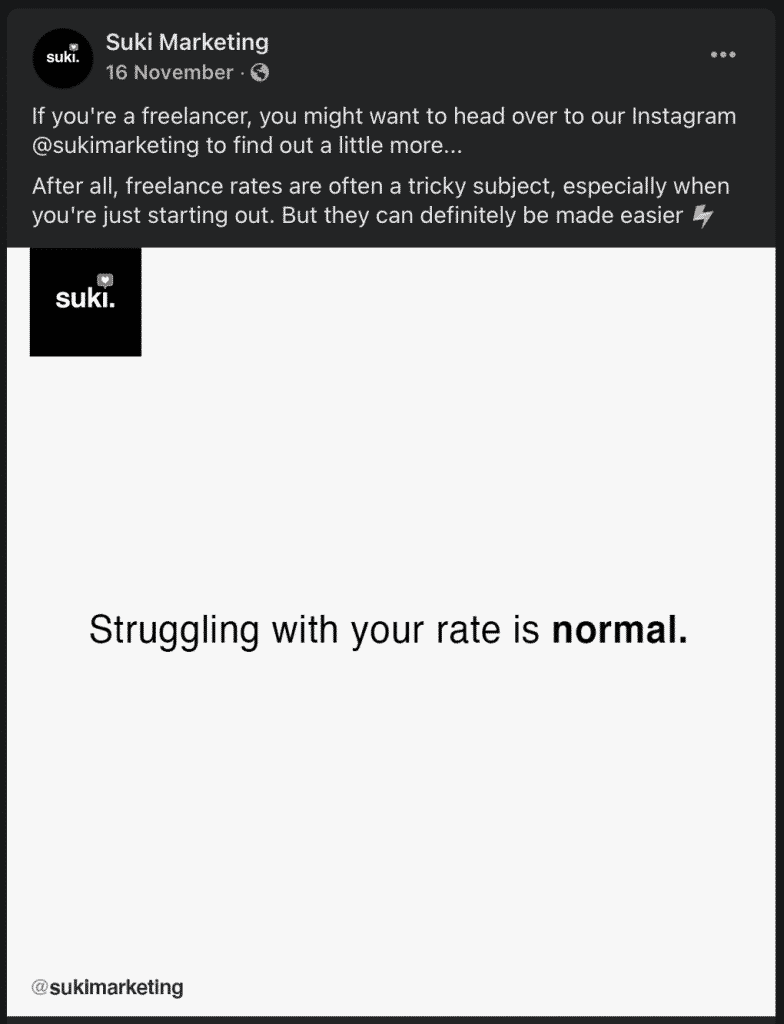Whether you call it batching and blasting or cross-posting, sharing the exact same post across multiple social platforms is tempting.
After all, it keeps your accounts active, saves you time and makes it easy to share your content far and wide. But before you get carried away, the short-term advantages most certainly outweigh the long-term drawbacks.
So, if you’re looking to kick this bad habit to the curb, keep reading.
Why posting the same message across platforms is a bad idea
Sharing the same message across networks is a little like relying on Google Translate. You quickly run the risk of getting an odd result that looks a little careless and aimless.
While your audience may be familiar with using multiple social platforms, it doesn’t mean they use them in the same way. Aspects like caption length, image formatting and language/tone differ by platform.
Sharing the exact same post across the board means you might accidentally bombard Facebook with hashtags or invite followers to retweet you on a platform that isn’t Twitter. Or pin your post on Instagram. Doesn’t look good, does it?
Without tweaking your content per platform, you may lose part of your caption, or tag an account on Instagram that doesn’t exist on another. While sharing a carousel on Facebook doesn’t quite have the same effect as it does on Instagram.
So what happens when you focus on Instagram and push that content elsewhere? Since Instagram lets you link your profile to other platforms, it can be easy to automatically share each post everywhere else. However, while that seems great in theory… In practice, not so much.
When you push a post to Twitter from Instagram, your tweet will include a link, not the image. Which means you’ll quickly miss out on the engagement the visual itself would generate. Instead, your tweet will look a little sloppy, with no encouragement for your followers to engage.
How do audiences differ across platforms?

You don’t have to work in social media marketing to understand the differences across platforms. LinkedIn, as we all know, is known for business networking. It’s like your online CV, with opportunities to connect with other professionals. Naturally, you wouldn’t post in the same way you would on Facebook.
Facebook is renowned for arguments in comments, groups and across pages. But amongst the madness, you can showcase your brand’s page if you work hard.
Across the board, these platforms can be used for personal and business use. With over 2.24 billion monthly active users, Facebook cannot be ignored for sure. But it doesn’t matter how many people are using the platform if you’re getting your content all wrong.
Look at it this way. On Twitter, you have a 280 character limit. This forces businesses to be creative, and engage in real-time. With so many tweets flying around, you need to keep up. But… You wouldn’t post a status update on Facebook within the 280 limit every few hours, would you? Of course not. If you did, you’d quickly lose followers.
If you’re not sure which social network to use for your business, let’s sum them up.
- Huge number of monthly active users
- Considered a ‘pay to play’ network, making organic reach harder
- Powerful analytics
- Great for creating groups for customer interaction
- Takes consistent engagement
- Highly appealing visual aspect
- More popular than Facebook with younger generation
- Created for mobile
- Need to consistently post/engage to grow
- Ads can see 1-3% more success than Facebook
- Easy to engage followers and influencers
- Free targeting with # and @
- Can drive traffic
- Requires multiple tweets daily
- Lots of “noise” to compete with
- 65+ million active users
- Great for business-related content
- Perfect for networking
- Makes recruitment easier
- Works well for B2B businesses
Or, if you fancy Pinterest, you’ll find less expensive advertising, low-cost tools, plenty of potential traffic and the need to post consistently. There are more social networks to explore, but we’ve covered the main platforms businesses tend to push content across.
Stop reposting the same message on the same platform
Much like posting the exact same message across several platforms, repeating the message on one account is also a bad habit.
You know when you hear a song on the radio so much that you can’t stand listening to it? That’s how your audience will feel when you continue to regurgitate the same content to fill the gaps.
It’s not just your followers that will start to notice you’re repeating yourself, either. Twitter is just one major platform that is limiting automation and identical content in an attempt to curb bots and spam accounts. With social media networks getting smarter each day, repeating content does more than bore your followers.
What’s the alternative to simply pushing content across networks?
Instead of crafting your content for one platform and cross-posting, tweak your content accordingly. While imagery may be transferable from one network to another, the language you use and the inclusion of elements such as emojis, differs greatly.
Instead of pushing your posts to every platform, stop and tweak your content to ensure the format is correct and the messaging appropriate. When every post is exactly the same word-for-word across platforms, it simply looks sloppy.
Take a look at how we use a snippet of our Instagram post for other platforms.


8 Tips for crafting unique messages in your content
1. Optimise content for each platform
While cross-posting seems tempting, your content can quickly be ruined when you don’t follow the format of each platform.
- Check your caption to ensure you’re getting the tone right across platforms.
- When you add videos and images, use the correct dimensions.
- If you’re using hashtags and tagging accounts, double check you’re using relevant hashtags across platforms and tagging accounts that exist across each network.
2. Write an awesome caption/headline
While you may not need to write an essay to go with your post, character limits do vary across platforms. To get the most out of your social posts, use relevant and engaging language that fits your brand’s voice.
- Think about what you really want to say to your audience, and how your caption can complement your visual content.
- Test different captions or headlines with the same piece of content to determine what performs best.
3. Take time to edit
Before scheduling or hitting send, take a moment to look over your content for possible typos, broken links and hashtags that were tailored to Instagram but may not suit another platform.
4. Post at the right time
Check your analytics to pin down the perfect times to post on each platform. While you might find your followers on Instagram are more active around 3pm, this may not be the same for Facebook, etc.
Stagger your posts throughout the day to deliver a steady stream of content, rather than flood feeds with your content all at once. When your followers start to recognise that you’re posting regularly, you’ll start to earn their trust and loyalty online.
5. Don’t post too much
While posting content steadily is important, don’t go overboard. Each platform has different norms regarding how often to post, or you may notice a drop in engagement.
For example, Twitter followers will expect several posts a day to boost engagement. While Facebook or LinkedIn is a 1 to 2 daily post type platform. Always choose quality over quantity.
6. Share content in the right places
Instead of pushing one piece of content across multiple platforms, consider the context and tone of each platform. For example, a meme or trending hashtag may work wonders on Twitter, but fall flat on LinkedIn. Know your audience and the content will come.
7. Schedule content
Using a scheduling tool such as Buffer, Later.com or Hootsuite will make planning content a lot easier. These tools will help you to spread your posts out across platforms and hit the perfect timings.
They each have their own analytics pros and cons, so you can quickly learn what works and refine your social media strategy.
8. Use clear CTAs
With every piece of content, encourage your followers to take action. Whether it’s visiting a new blog, leaving a comment on the post itself or ‘reacting’ to content in a specific way to give an opinion.
Make it clear to your audience what you want them to do.
Don’t just tick the box of social media
While writing content for each platform may take a little more time, it’s definitely worthwhile. Posting any content, at any time, will show a lack of direction and strategy to your followers. Take the time to plan your social calendar for maximum impact.
So don’t just tick the box of social media to appear active, get creative with Suki Marketing. If you’re fed up of simply cross-posting your content across the board, work with us. We’ll do it the right way.
